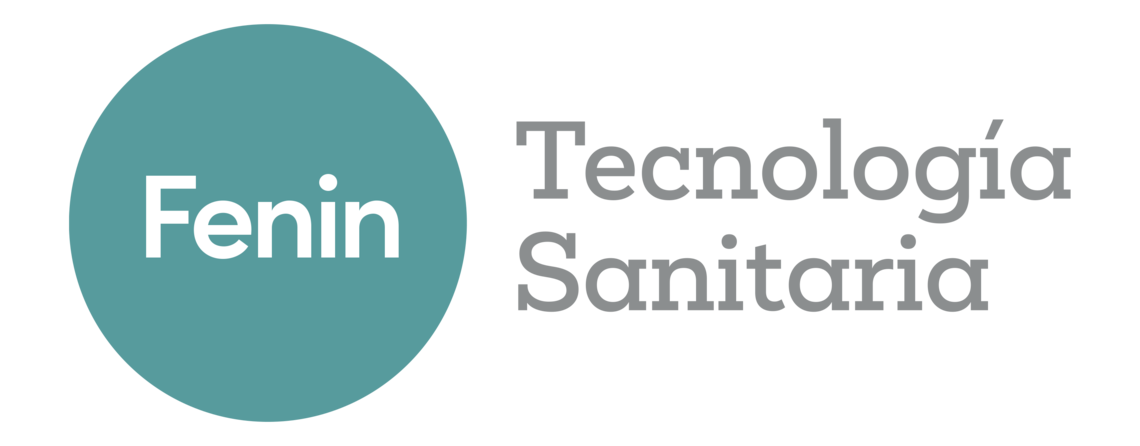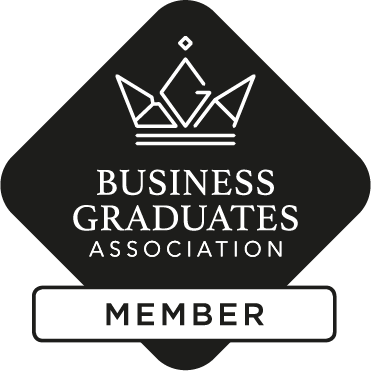University certificate
Scientific endorser

Scientific endorser

The world's largest faculty of medicine”
Introduction to the Program
If you are a doctor, head of service or section, assistant, coordinator, director or manager in a hospital or outpatient care center, and you want to update and develop your management skills to respond to the current reality and context in your professional future, this is the perfect postgraduate program for you”

In the health structure, medical divisions are fundamental in performing different health processes, where the paradigm of Clinical Management is increasingly imposed, making it necessary to provide specialization in this area for physicians who develop or may reach positions of responsibility in health care, either in middle management, health care or in medical director and manager positions.
There are many new challenges in the sector which must be addressed, such as the approach to complex and chronic diseases, the relationships between professional groups, citizens (users, patients, clients) and providers and the development of new health technologies. There is also the need to increase efficiency in the use of resources to assume the new participative and transparent form of leadership; and to gain a position in the interdisciplinary team.
In order to contextualize the program, a review of health systems and policies, as well as the administrative process, is presented first, followed by considerations on the care and medical division and its role in the system. In the area of service management, the Clinical Management of Healthcare services, the management of the organization's people, talent, professionals, and the management of investments and economic evaluation stand out. Fundamental aspects in the daily activity of health managers.
It will also focus on all aspects related to the management of hospital and outpatient services and, specifically, on the quality of care in the centers and their different departments.
In addition, there will be a series of units focused on improving management skills in specific areas such as care for complexity and chronicity, alternatives to traditional hospitalization, the use of new technologies in the sector, evidence-based medicine and prudent prescribing, clinical safety, etc.
On the other hand, we will have modules on personal and health marketing from the development of personal branding, to the management of social networks and customer service and, finally, the research methodology required to work in Clinical Management will be assessed.
The Professional master’s degree in Clinical Management, Medical and Healthcare Administration, will qualify you to occupy a position of responsibility as head of service or section”
This Professional master’s degree in Clinical Management, Medical and Healthcare Administration contains the most complete and up-to-date scientific program on the market. The most important features include:
- Development of practical cases carried out by experts in health management and other specialties
- The graphic, schematic, and practical contents with which they are created provide scientific and practical information on the situations that regularly occur in the hospital setting
Presentation of practical workshops on procedures and decision making - Algorithm-based interactive learning system for decision making in the situations that are presented to the student
- Action protocols, where you can find the latest trends in health management
- All of this will be complemented by theoretical lessons, questions to the expert, debate forums on controversial topics, and individual reflection assignments
- With a special emphasis on scientific methods and research methodologies in health management
- Content that is accessible from any fixed or portable device with an Internet connection
This Professional master’s degree is the best investment you can make when selecting a specialization program for two reasons: in addition to preparing you as a clinical manager, you will obtain a qualification endorsed by TECH Global University”
The teaching staff includes a team of prestigious healthcare management professionals, who bring their experience to this program, as well as renowned healthcare specialists, who complement the program by adding interdisciplinary elements.
The multimedia content developed with the latest educational technology will provide doctors with situated and contextual learning, i.e., a simulated environment that will provide an immersive learning program to practice in real situations.
This program is designed around Problem-Based Learning, through which the faculty must try to solve the different professional practice situations that arise throughout the program. For this purpose, they will be supported by an innovative interactive video system developed by renowned experts in the field of Health Management, with extensive teaching experience.
You will be able to complete the Professional master’s degree 100% online, adapting it to your needs and making it easier for you to take it while you carry out your full-time healthcare activity"

Increase the quality of your management with this program and improve patient care"
Why study at TECH?
TECH is the world’s largest online university. With an impressive catalog of more than 14,000 university programs available in 11 languages, it is positioned as a leader in employability, with a 99% job placement rate. In addition, it relies on an enormous faculty of more than 6,000 professors of the highest international renown.

Study at the world's largest online university and guarantee your professional success. The future starts at TECH”
The world’s best online university according to FORBES
The prestigious Forbes magazine, specialized in business and finance, has highlighted TECH as “the world's best online university” This is what they have recently stated in an article in their digital edition in which they echo the success story of this institution, “thanks to the academic offer it provides, the selection of its teaching staff, and an innovative learning method aimed at educating the professionals of the future”
A revolutionary study method, a cutting-edge faculty and a practical focus: the key to TECH's success.
The most complete study plans on the university scene
TECH offers the most complete study plans on the university scene, with syllabuses that cover fundamental concepts and, at the same time, the main scientific advances in their specific scientific areas. In addition, these programs are continuously being updated to guarantee students the academic vanguard and the most in-demand professional skills. In this way, the university's qualifications provide its graduates with a significant advantage to propel their careers to success.
TECH offers the most comprehensive and intensive study plans on the current university scene.
A world-class teaching staff
TECH's teaching staff is made up of more than 6,000 professors with the highest international recognition. Professors, researchers and top executives of multinational companies, including Isaiah Covington, performance coach of the Boston Celtics; Magda Romanska, principal investigator at Harvard MetaLAB; Ignacio Wistumba, chairman of the department of translational molecular pathology at MD Anderson Cancer Center; and D.W. Pine, creative director of TIME magazine, among others.
Internationally renowned experts, specialized in different branches of Health, Technology, Communication and Business, form part of the TECH faculty.
A unique learning method
TECH is the first university to use Relearning in all its programs. It is the best online learning methodology, accredited with international teaching quality certifications, provided by prestigious educational agencies. In addition, this disruptive educational model is complemented with the “Case Method”, thereby setting up a unique online teaching strategy. Innovative teaching resources are also implemented, including detailed videos, infographics and interactive summaries.
TECH combines Relearning and the Case Method in all its university programs to guarantee excellent theoretical and practical learning, studying whenever and wherever you want.
The world's largest online university
TECH is the world’s largest online university. We are the largest educational institution, with the best and widest online educational catalog, one hundred percent online and covering the vast majority of areas of knowledge. We offer a large selection of our own degrees and accredited online undergraduate and postgraduate degrees. In total, more than 14,000 university degrees, in eleven different languages, make us the largest educational largest in the world.
TECH has the world's most extensive catalog of academic and official programs, available in more than 11 languages.
Google Premier Partner
The American technology giant has awarded TECH the Google Google Premier Partner badge. This award, which is only available to 3% of the world's companies, highlights the efficient, flexible and tailored experience that this university provides to students. The recognition as a Google Premier Partner not only accredits the maximum rigor, performance and investment in TECH's digital infrastructures, but also places this university as one of the world's leading technology companies.
Google has positioned TECH in the top 3% of the world's most important technology companies by awarding it its Google Premier Partner badge.
The official online university of the NBA
TECH is the official online university of the NBA. Thanks to our agreement with the biggest league in basketball, we offer our students exclusive university programs, as well as a wide variety of educational resources focused on the business of the league and other areas of the sports industry. Each program is made up of a uniquely designed syllabus and features exceptional guest hosts: professionals with a distinguished sports background who will offer their expertise on the most relevant topics.
TECH has been selected by the NBA, the world's top basketball league, as its official online university.
The top-rated university by its students
Students have positioned TECH as the world's top-rated university on the main review websites, with a highest rating of 4.9 out of 5, obtained from more than 1,000 reviews. These results consolidate TECH as the benchmark university institution at an international level, reflecting the excellence and positive impact of its educational model.” reflecting the excellence and positive impact of its educational model.”
TECH is the world’s top-rated university by its students.
Leaders in employability
TECH has managed to become the leading university in employability. 99% of its students obtain jobs in the academic field they have studied, within one year of completing any of the university's programs. A similar number achieve immediate career enhancement. All this thanks to a study methodology that bases its effectiveness on the acquisition of practical skills, which are absolutely necessary for professional development.
99% of TECH graduates find a job within a year of completing their studies.
Professional Master's Degree in Clinical Management, Medical and Healthcare Administration
At TECH we are aware of the new challenges that arise in clinical management, ranging from adaptation to the latest technologies, to advances in the treatment of chronic diseases and relations between professional groups. For this reason, we have developed this Professional Master's Degree, which lasts one year and is focused on those physicians who wish to train for positions of leadership, care or management responsibility.
Study a Professional Master's Degree in Clinical Management, Medical and Healthcare Management
Doctors with formal knowledge in administration, management and health management can occupy positions of responsibility in all types of organizations and companies in the field of health; from health care centers to private practices (financial advice, management work in NGOs). Through this online Professional Master's Degree from TECH Global University, you will be prepared to access a large number of professional opportunities that will help you boost your career.
Prepare yourself in the largest online university in the world
Through the relearning method you will study all the concepts necessary to occupy a management position and succeed in the human, technical or business decisions you make. Thanks to this Professional Master's Degree's, its eminently practical training and its up-to-date contents, you will be able to exercise in any position of responsibility in the healthcare field.







